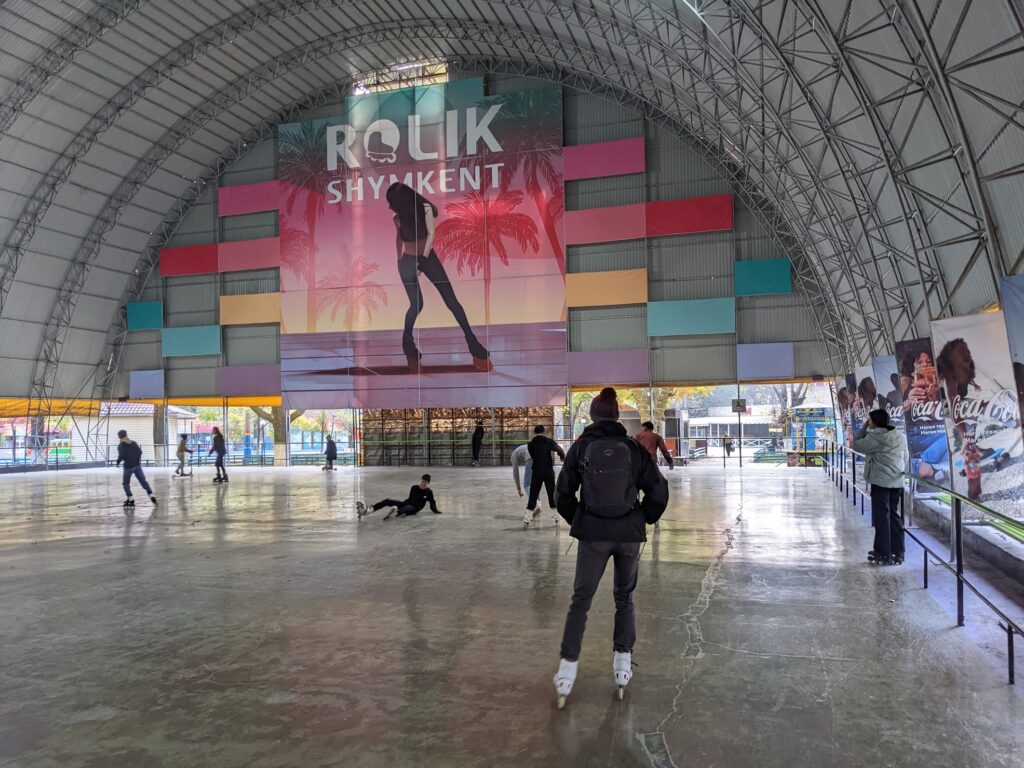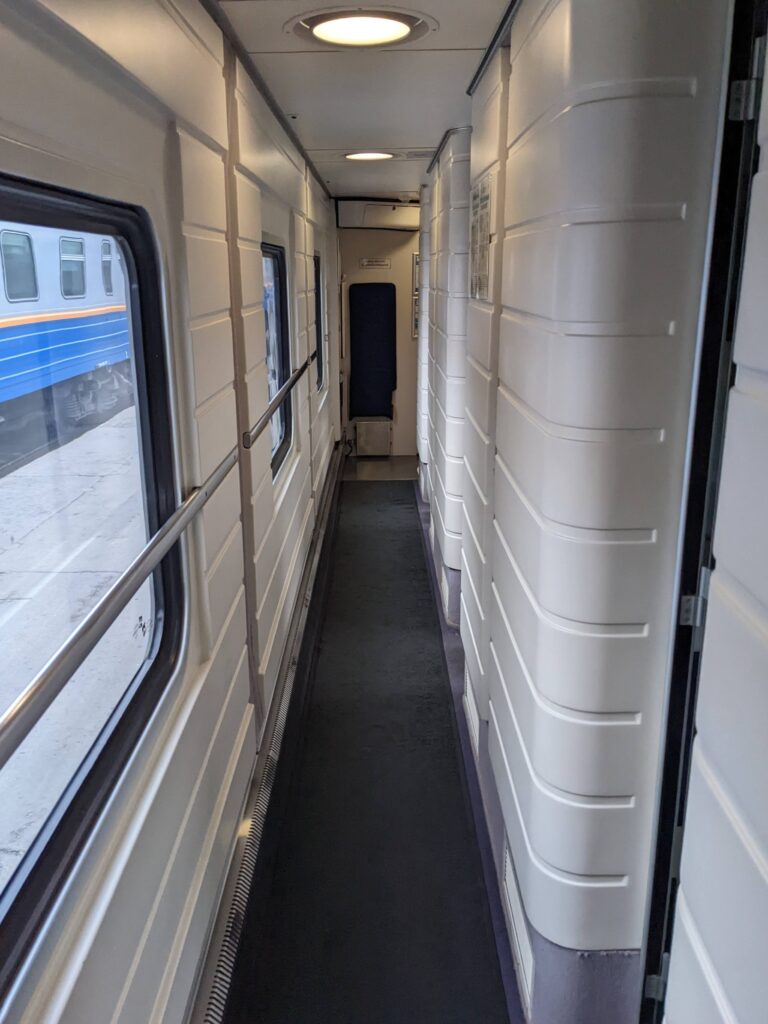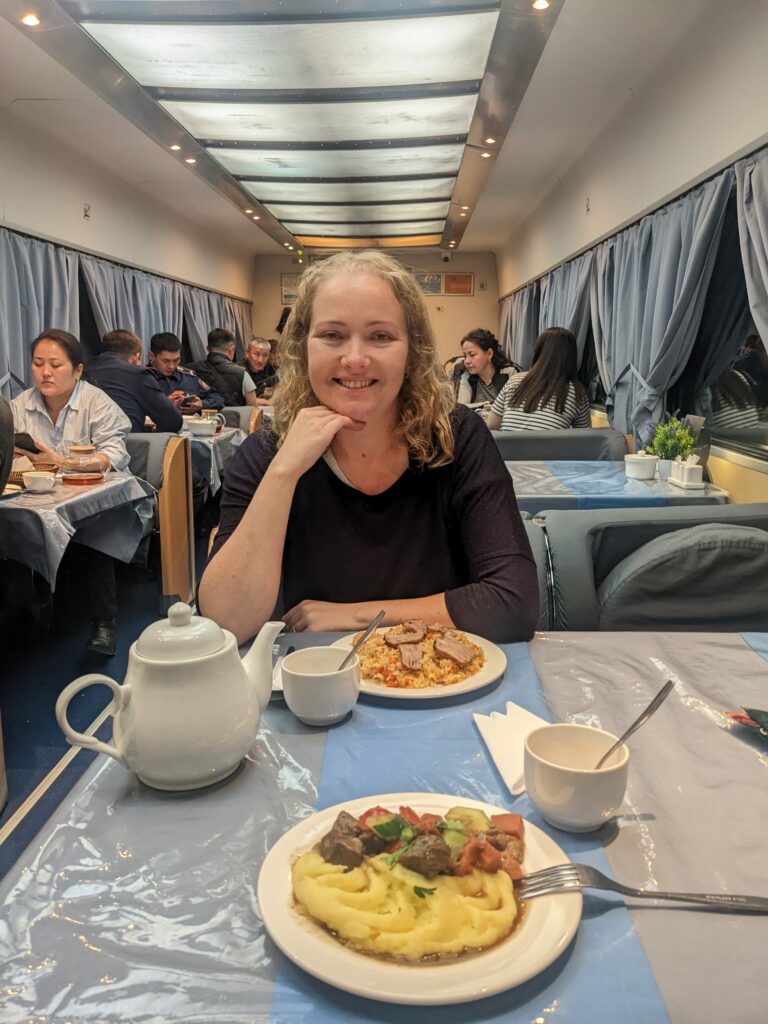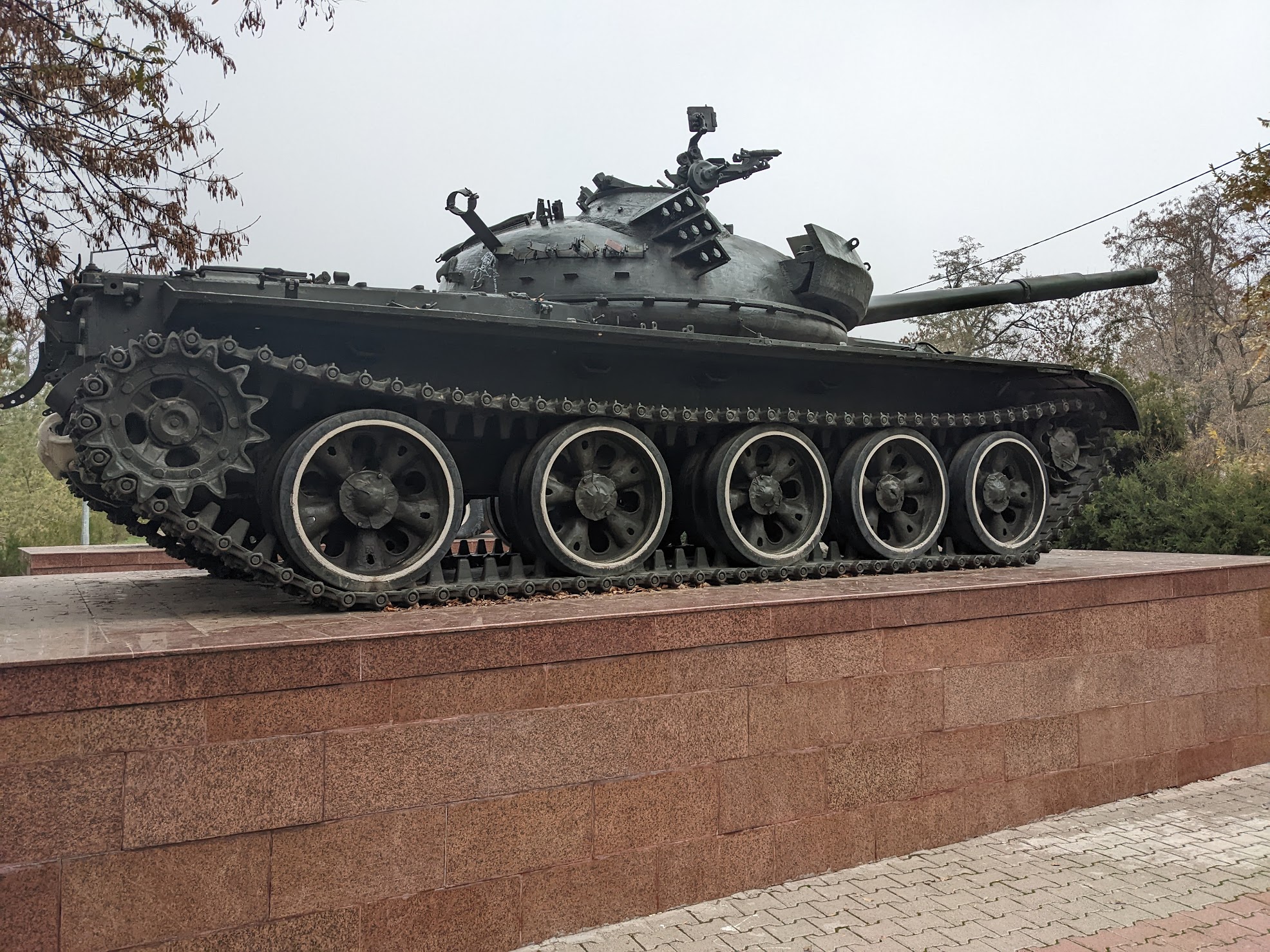We spent 3 days covering the 1,630 km between Tashkent (the capital of Uzbekistan) and Astana (the capital of Kazakhstan). This journey rather neatly falls into 3 parts: crossing the border by road at Chernayevka, spending two nights in the modern city of Shymkent, and travelling the final stretch to Astana on a sleeper train.
Part 1: Crossing the border
We took a 20 minute taxi from Tashkent to the border crossing at Chernayevka. For many years, this border was notorious for its lengthy delays, during which foreign travellers would have their registration records and customs forms scrutinised, their currencies counted, bags searched and phone photos inspected as they exited Uzbekistan. However, the Uzbek government’s recent efforts to encourage tourists have done away with this bureaucracy, and our experience was no different to any other international border’s customary passport stamping and luggage scanning. Not wanting to push our luck, we refrained from taking any photos as we sped through the formalities.
Emerging onto the Kazakh side of the border, we were greeted by some of the most intense taxi and money changing hustling to date. Circles of hawkers followed us all the way to the “official” money changers, where we converted our remaining (Uz) Soum into (Kz) Tenge. Rather helpfully, we think the lady who changed our money told the taxi drivers that we didn’t have enough Tenge for the extortionate prices they were asking, and a few drivers lost interest in us.
We eventually found a taxi share with a Swiss-American couple who had been in Central Asia for the last few months and were heading north-east to Taraz. The negotiation was made much easier by the fact that the American chap spoke fluent Russian, so despite his hangover, he became our chief communicator, and we had a fun couple of hours exchanging stories and tips.
Part 2: Relaxing in Shymkent
Shymkent is Kazakhstan’s third largest city, and its modern amenities and food options felt like the land of plenty after a few weeks in Uzbekistan. On top of this, our comfortable hotel room bizarrely had a small washing machine in its bathroom, and we took delight in washing as many of our clothes as we could find hanging space for around our room. It’s the small things!
Since both of Shymkent’s museums were closed during our visit, we spent a good chunk of our time exploring the city’s parks. Like many other ex-Soviet cities, its vast parks were scattered with a handful of monuments and memorials, respectively celebrating independence and remembering lives lost in wars. First up was Abay park, which included yet another fighter jet, a tank and a few armoured vehicles, as well as various artillery.
However, it didn’t take long for the cold to get to us, and we retreated to the warmth of a shopping centre for food and to browse cosy winter clothes that had no chance of fitting in our backpacks.
We then followed the Koshkar-Ata canal through pre-Russian Shymkent with the hope of seeing some local life and potentially even making a feline friend. The quiet streets and village-like atmosphere were quite a contrast to the rest of Shymkent’s wide and busy roads, but sadly all the cats seemed to be hiding inside from the cold weather.



We emerged from this enclave of old Shymkent at Independence Park to take in the panoramic views and get up close to the park’s centre piece – a colossal torch-like monument which apparently represents the centre opening of a yurt.


With the obligatory parks and memorials ticked off, we had some time to stroll along Beybitshilik Avenue – a popular pedestrianised street flanked by various fairground-style attractions as well as some beautiful murals.

One attraction in particular caught our eye – a roller-disco blaring out cheesy-pop on its echoey PA system. This felt like a great opportunity to get the blood pumping in our legs again, and despite dragging up the average age by some margin, we donned some incredibly uncomfortable roller blades and hit the Rolik. Even though there were relatively few others at the roller-disco, there was no shortage of chaos provided by our fellow roller skaters, bladers, scooterers and skateboarders. We spent our allotted half-hour avoiding collisions and pondering the provenance of the red stains on the concrete floor…

Part 3: Shymkent to Astana
We managed to snag the last two same-compartment beds on the modern and relatively high-speed 15 hour train to Astana. Having taken a few trains over the past fortnight, we confidently boarded the train, met our compartment mates, and began the process of stowing our luggage and making our beds. However, I’d just about managed to wedge Sara’s bag firmly under one of the beds when it became clear that we were in the wrong wagon altogether. We apologised profusely and retrieved our luggage with some difficulty, before heading off in search of the compartment we’d actually booked.

Our actual compartment buddies turned out to be a super-friendly family of four, who (slightly confusingly) occupied the two lower berths of our four-berth compartment. Once again, Google translate came to our rescue as we covered the standard topics of the weather and the Premier League. They also generously shared with us their bag of Kurut, an Uzbek national snack of dried yoghurt resembling a golf ball, which our book helpfully described as “having the half-life of uranium.” Without this knowledge, I naively popped the whole thing in my mouth, before casually reaching for my water to try to replace some of the moisture that had been absorbed by the dry, salty gobstopper. Sara watched me with some amusement (she said I looked like a Blue Peter presenter trying desperately to hide my true feelings), before realising she would also need to eat hers to avoid causing any offence. I’m not sure that her strategy of washing small pieces down with an entire 500 ml bottle of water was any better, but we both got there in the end.

The train itself was delightfully fast, clean and modern, especially after the number of ancient trains we’d taken throughout Uzbekistan. On top of all this, it even had a dining car, which we were keen to experience. Despite the overpriced traditional fare, it felt pretty decadent to dine at a spacious table as the train whizzed through the night.

Although we felt a bit mad for squeezing such a long journey into our remaining time in Central Asia, the speedy overnight train ate up the miles in what felt like no time at all. And my goodness was it worth it when we emerged into the snow-white and completely frozen futuristic city that is Astana.



